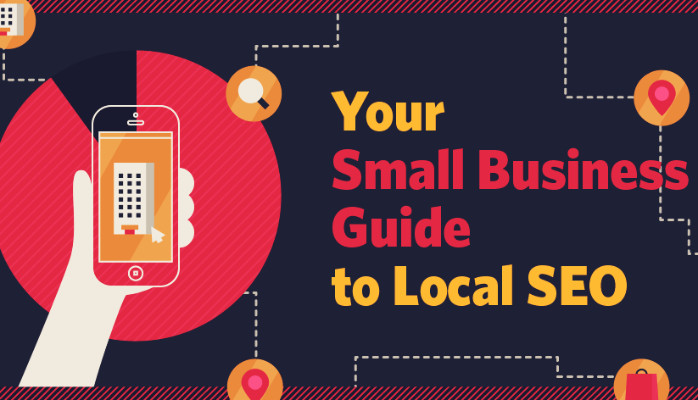In the highly competitive world of e-commerce, on-page SEO plays a critical role in attracting organic traffic and converting visitors into customers.
Optimizing content for your product pages, category pages, and even blog posts is essential to rank higher on search engines and provide a seamless experience for users.
Here’s a comprehensive guide to writing optimized content for an e-commerce website, broken down into key sections:
1. Keyword Research for E-commerce Content
Before you start writing, keyword research forms the backbone of your content strategy. For e-commerce, the focus is on commercial intent keywords—those that indicate buying intent, such as “buy,” “best,” “cheap,” “discount,” and product-specific searches. Here’s how to conduct keyword research:
- Use Keyword Research Tools: Tools like SEMrush, Ahrefs, and Google Keyword Planner help identify high-traffic keywords.
- Long-Tail Keywords: Focus on long-tail keywords for more specific queries like “affordable red leather jacket.”
- Competitor Analysis: Study your competitors’ keyword usage to find gaps or opportunities.
- User Intent: Understand whether users are looking for information (informational), are comparing products (navigational), or are ready to make a purchase (transactional).
2. Optimizing Product Pages
Product pages are the heart of any e-commerce site, and they need to be rich in content and highly optimized.
a. Product Titles (H1 Tags)
- Keyword-Optimized: Ensure the product title contains your primary keyword.
- Clear and Descriptive: Product titles should clearly state what the product is, e.g., “Men’s Waterproof Running Shoes – Lightweight & Breathable.”
b. Meta Descriptions
- Enticing and Informative: Write compelling meta descriptions that include keywords and a call to action, such as “Shop our lightweight men’s running shoes. Free shipping available!”
- 160 Characters: Keep it within Google’s limit of 150-160 characters.
c. Product Descriptions
- Unique Content: Never copy manufacturer descriptions. Write original, detailed descriptions that highlight the product’s features, benefits, and specifications.
- Focus on Benefits: Don’t just list features—explain how they benefit the user. Example: Instead of “Water-resistant fabric,” say, “Stay dry during your runs with our water-resistant fabric, perfect for rainy weather.”
- Include Keywords Naturally: Incorporate primary and secondary keywords in a natural way without stuffing them. Aim for a 1-2% keyword density.
- Scannable Content: Use bullet points, short paragraphs, and bolded text to make content easy to read.
d. Images and Alt Text
- High-Quality Images: Use high-resolution images and optimize them for faster loading by compressing the file size.
- Alt Text: Add descriptive alt text that includes your primary keyword. Example: “Men’s waterproof running shoes in black.”
3. Category Page Optimization
Category pages serve as landing pages for groups of products, and they need to be optimized for both users and search engines.
a. Category Titles (H1 Tags)
- Target Primary Keywords: Use broad but highly relevant keywords for categories. Example: “Men’s Running Shoes.”
- Avoid Keyword Stuffing: Keep it simple and clean.
b. Category Descriptions
- Introductory Text: Write a short introduction of 100-300 words that describes the product range in the category.
- Include Keywords: Use both primary and secondary keywords naturally within the description.
- User Experience: Avoid making the category text too long. Place it at the top or bottom of the page so that users can focus on products.
4. Internal Linking and User Experience
Proper internal linking improves the user experience and helps search engines crawl your site efficiently.
- Link Related Products: On product pages, link to related or complementary products to encourage cross-selling. Example: “Pair this jacket with our best-selling hiking boots.”
- Breadcrumbs: Use breadcrumb navigation to help users easily navigate between product categories and subcategories.
- Anchor Text Optimization: Use keyword-rich anchor text for internal links, but ensure it flows naturally.
5. Blog Content for E-commerce Sites
Blogs provide an opportunity to target informational keywords and engage customers at different stages of the sales funnel.
a. Target Long-Tail Keywords
Write blog posts that target long-tail, informational queries like “How to choose the best running shoes” or “Benefits of waterproof shoes for runners.” This brings in traffic from users who may not yet be ready to buy but are researching products.
b. Content Structure
- Clear Headings (H2, H3): Break the content into clear sections using headings that contain keywords.
- Optimize for Featured Snippets: Create short, concise answers (40-60 words) for common questions, aiming to rank in Google’s featured snippets.
- Internal Linking: Link to relevant product or category pages within blog posts, guiding readers further down the sales funnel.
c. Visuals
- Add Product Images or Infographics: Visuals can improve user engagement and help explain complex ideas.
- Optimize Alt Text: Ensure blog images also contain optimized alt text.
6. Mobile Optimization and User Experience
Since a large portion of e-commerce traffic comes from mobile devices, ensure your site is optimized for mobile.
- Responsive Design: Ensure your content looks great and functions well on all devices, including smartphones and tablets.
- Page Load Speed: Compress images, use lazy loading, and minimize redirects to ensure fast page load times. Google’s Core Web Vitals are critical here.
- Mobile-Friendly Content: Keep content concise and avoid large blocks of text. Make use of accordions for FAQs to enhance readability.
7. Technical On-Page SEO
In addition to writing content, ensure that technical elements are in place.
- URL Structure: Use clean URLs that include primary keywords. Example:
/mens-running-shoes/waterproof-running-shoes/. - Schema Markup: Use product schema to help search engines understand key details such as price, availability, and reviews.
- Canonical Tags: Use canonical tags to avoid duplicate content issues, especially on product pages with variations.
8. User-Generated Content (UGC)
Encourage customers to leave reviews and ratings, as they can serve as fresh, keyword-rich content.
- Product Reviews: Positive reviews help with social proof and improve trust. They also provide unique content for your product pages.
- Q&A Sections: Include a Q&A section where users can ask questions about the product. Answer them to add fresh content regularly.
9. Content Updates and Monitoring
Finally, content is not a set-it-and-forget-it task. Regularly update your product and category pages based on new keyword research, product features, or seasonal changes.
- Content Refresh: Every 6-12 months, revisit your content to see if it needs updating.
- Monitor Analytics: Use Google Analytics and Search Console to track how your pages are performing and adjust your strategy based on data.
Conclusion
Creating SEO-friendly content for your e-commerce site is an ongoing process that requires balancing keyword optimization with a focus on user experience.
By following these guidelines, you can ensure your content not only ranks well on search engines but also provides value to your customers, increasing the likelihood of conversions.




